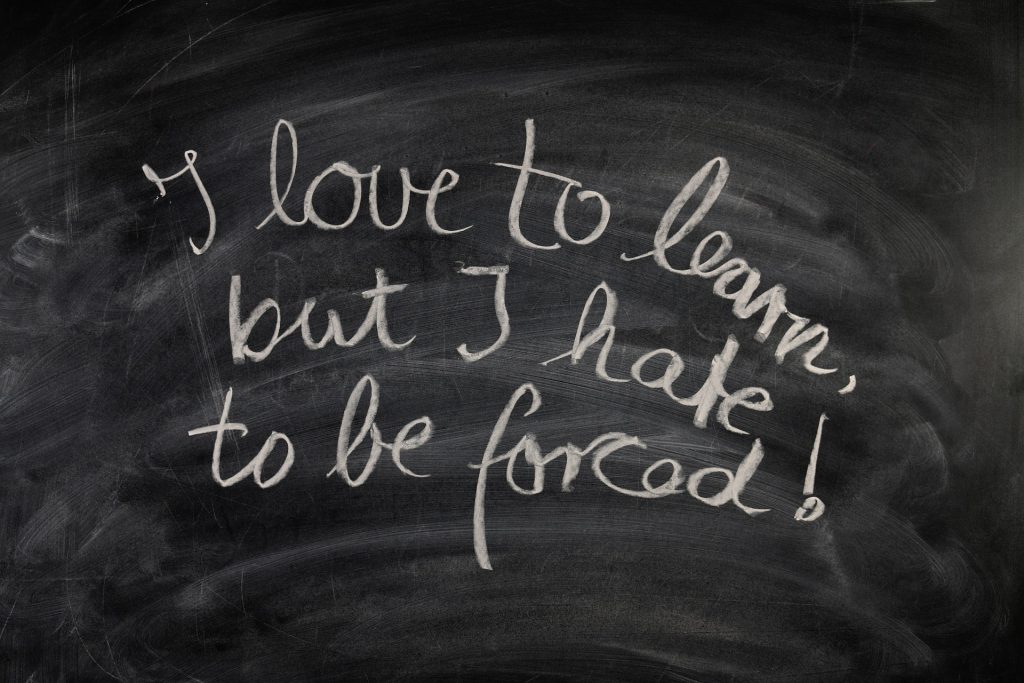Self-directed learning – what comes to mind when we hear this? It sounds like a complex pedagogical concept. In simple terms, it is the process of a learner learning independently. Imagine a scenario where you choose what to learn, how to learn, when to learn and go about it without any external stimulus. That indeed is true self-directed learning.
It seems lofty in principle and appears to be something grown ups can do. Can children practise self-directed learning? Is it possible? Should we aim for that in our schools?
I believe that it is most essential for our children to practise self-directed learning and it is imperative that our educational system creates the environment for it.
Scenarios
Imagine this scene – students carry heavy bags filled with books to school. There, they sit through 6 to 7 periods of instruction, mostly confined to their benches or tables. They listen to teachers one after another instructing them on different subjects. Then, they come back home with homework – complete your class notes, write questions and answers. This is a common scene in our main-stream schooling system. Is there any self-directed learning here? Sadly, no.
Now imagine a new scene – students sit in front of a computer/tablet/phone with cameras and microphones on. Here, they sit through 3 to 4 periods of instruction, mostly confined to their study table. They listen to teachers instruct them on different subjects. Homework is shared on a platform – complete the class notes, write questions and answers.
What do we notice? The medium has changed, but the methodology has not. The student is still a passive participant, technology has made an entry. Is there any self-directed learning here? Sadly, the answer is still no.
Additional challenges in the second scenario are the uncertainties of technology performance, teachers’ struggle with technology, and students’ increased disengagement.
Impact on learning experience
While we are doing the best we can, given the global crisis, it is high time to rethink our teaching methodologies and learning objectives. Whether teachers and students meet online or offline, providing an opportunity for self-directed learning enriches the learning experience.
As a concerned educator who believes that learning how to learn is the most important 21st century skill for both students and teachers, I strongly advocate self-directed learning. Over the last 18 months or so in my experience teaching students (of age 4 years to 15 years) at Abheek Academy, I have found simple strategies that work. I share them here with you all.
Self-directed learning strategies
- For older children, insist that they prepare for classes beforehand
- Use the session time for discussion and clarifying doubts
- For younger children, decide on a theme for the class
- Ask them to design an activity around that theme
- Conduct these designed activities during the session
- Focus less on syllabus and more on student engagement
- Give them opportunity to express their ideas and questions
- If you are unfamiliar with the technology, seek students’ help – they usually know more and are delighted to help
- Encourage students to help each other
Do your best with what you have
We have all been thrown into an unprecedented situation. All we can do is make the best use of what we have. Let us not waste this crisis – let us use this as an opportunity to embrace self-directed learning for ourselves and our students.
I believe if we had focused on this earlier, we could have faced this pandemic better. It is not too late now either. If we make our students self-reliant, they will be better prepared to face future crises with confidence.
Not everything might be practical for everyone. Choose what works for you, take a baby step. It will go a long way.
I had written earlier about my thoughts about the purpose of education. Here, I leave you with this illuminating talk by Sir Ken Robinson – an educator I greatly admire – about the great responsibility that rests on us in preparing the next generation.
Please share your thoughts in the comments below.
Until next time, continue to stay curious.
Have you explored the NumberNagar® Preschool kit yet? Click here to know more.
Featured Image credits: Gerd Altmann from Pixabay
Sriraghavan S M
Latest posts by Sriraghavan S M (see all)
- Why self-directed learning is the need of the hour - 2 July 2021
- Discovering my teaching method - 8 January 2021
- Finding Balance - 23 October 2020
- A case for Alternative Learning - 9 October 2020
- Why I am a teacher - 4 September 2020


Hi numbernagar,
Thank you so much for sharing, children learn through hand on activities…yes need to give a chance to explore themselves.
Kindly do share the blog it’s very informative.
Thank you
Thank you Ms. Srilatha, for your kind words. We believe the same, children need a chance for exploration.
We will share future articles with you. Please check out our previous articles and continue to share your thoughts.